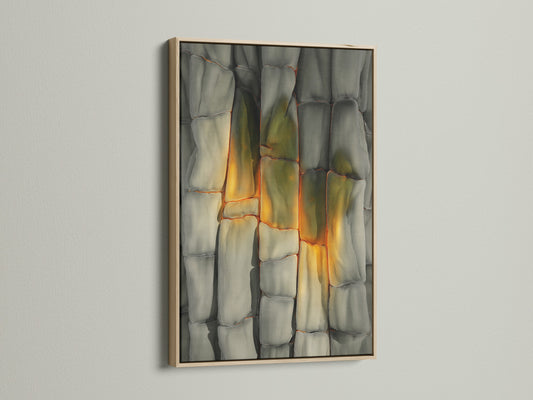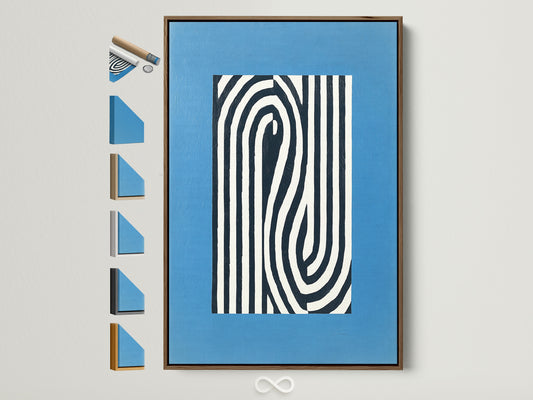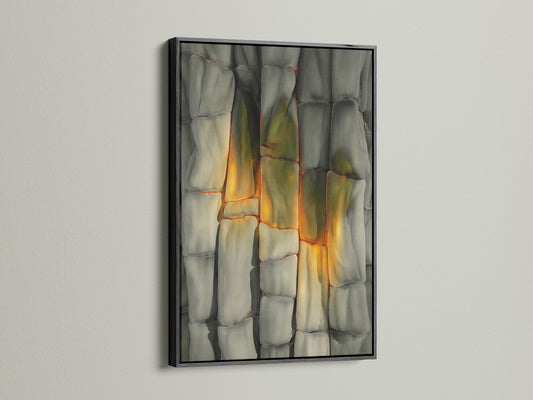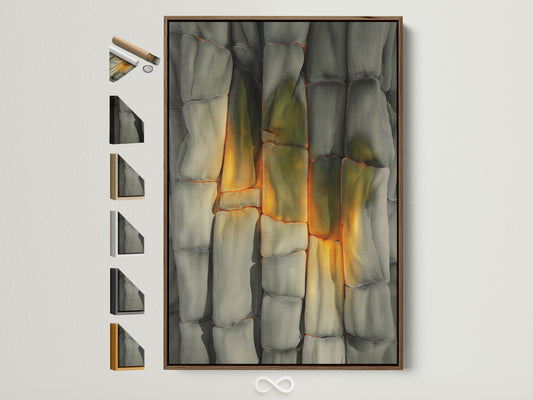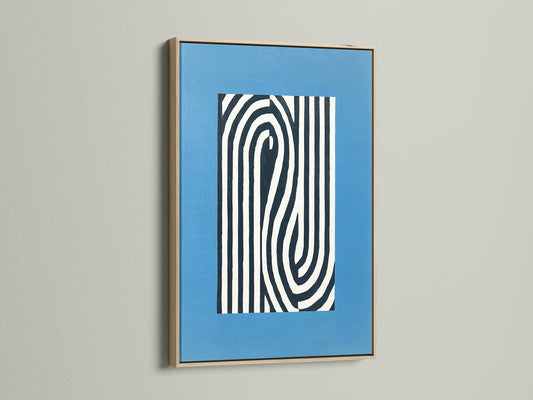Warm Minimalism: The Room‑by‑Room Playbook for Quiet, Cozy Interiors
Warm minimalism is the calm middle ground between bare white boxes and over‑decorated rooms. It keeps the clarity of minimalism—just fewer, better things—then layers in tactile materials, soft color, and human‑scaled light so spaces feel welcoming instead of austere. Think oak and linen, limewash and travertine, dimmable pools of 2700–3000K light, plus art with texture and breath.

What is “warm minimalism,” exactly?
It’s a minimalist interior with a pulse: pared‑back forms, functional layouts, and negative space—warmed by natural materials, earth‑toned palettes, and gentle, layered light. Compared with classic gallery‑white minimalism, this approach embraces grain, patina, and quiet color so rooms read serene, not sterile. Design editors describe it as simplicity with texture and comfort, a blend that feels both modern and livable. [oai_citation:5‡The Spruce](https://www.thespruce.com/warm-minimalism-design-style-8768183?utm_source=chatgpt.com)
Roots & References
Shaker restraint: function first, beauty through use
Warm minimalism borrows more from Shaker ethos than from glossy, high‑shine minimalism. Shaker chairs and peg rails were honest and economical; cedar, pine, and maple were celebrated in their natural state, and “extra” was pared away. That ethic—clarity, utility, restraint—still informs how many designers compose warm, quiet rooms today. For a historical lens on the forms and joinery, see The Met’s overview of Shaker furniture and Vitra Design Museum’s major exhibition on the movement’s lasting influence. [oai_citation:6‡The Metropolitan Museum of Art](https://www.metmuseum.org/essays/shaker-furniture?utm_source=chatgpt.com)
Aalto’s humanist modernism
Finnish architect Alvar Aalto softened hard‑edged modernism with flowing lines, warm woods, and luminous, human‑scaled spaces. His architecture—plus the archetypal birch plywood furniture—proves modern can be gentle. Official guides note how he infused modernism with warmth, daylight, and tactility—ideas that map cleanly to warm minimalism today. For deeper context on materiality and patina tolerance, explore these primers. [oai_citation:7‡Visit Finland](https://www.visitfinland.com/en/articles/alvar-aaltos-architecture-in-finland/?utm_source=chatgpt.com)



Palette, Materials & Finishes that Signal Warm Minimalism
Color: start with two light neutrals (e.g., alabaster and pale taupe), one support tone (mushroom, khaki, or greige), and one discreet accent (olive, rust, muted navy). Keep contrasts low to medium for a “soft‑focus” envelope.
Materials: oak, ash, birch, travertine, limestone, Terracotta, honed marble; linen, cotton, wool bouclé; raw brass and burnished bronze for a soft glow.
Wall finishes: a matte or mineral surface (e.g., limewash) cuts glare and gives subtle movement—ideal when you want hushed texture without pattern. For a deeper dive into application, breathability, and where it shines, see our guide to Limewash & Mineral Paint.
Pro move: repeat a finish twice in every sightline. Oak frame + oak tray. Linen sofa + linen lampshade. The echo binds the room without adding objects.
Light That Warms (Not Washes Out)
Lighting is the make‑or‑break for warm minimalism. Use layers: ambient (overall glow), task (focused for reading, prep, grooming), and accent (to graze texture or art). Dim everything. Aim for warm color temperatures around 2700–3000K so whites look creamy, wood looks golden, and skin tones feel natural. For standards and best practices, consult the IES Lighting Library. [oai_citation:8‡ies.org](https://ies.org/standards/lighting-library/?utm_source=chatgpt.com)
Design press and trade sources also underline the same principle: when ambient, task, and accent lighting balance, rooms feel both functional and emotionally calm—exactly the goal of warm minimalism. [oai_citation:9‡architecturalwest.com](https://architecturalwest.com/2025/03/18/warm-minimalism/?utm_source=chatgpt.com)
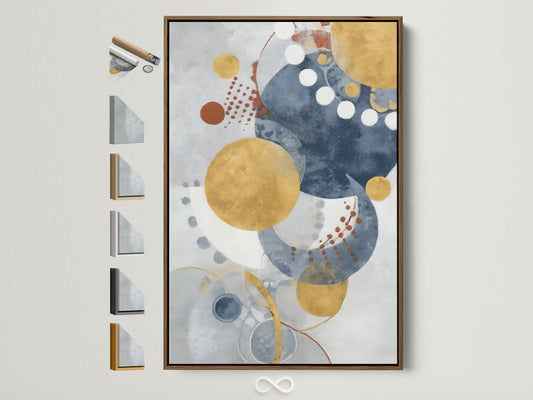
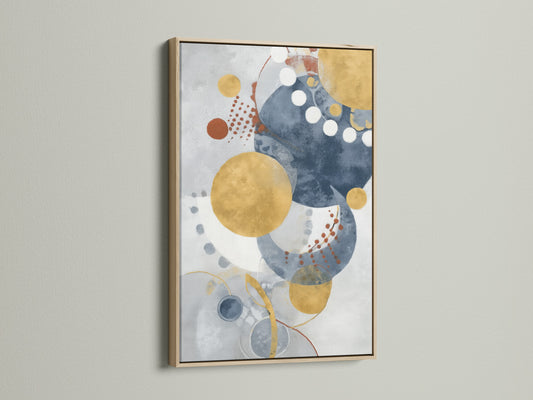
Room‑by‑Room Playbook
Living Room
- Anchor with one large, calm artwork (32–48"). Keep the frame oak or black depending on warmth vs. definition.
- Layer light: dimmable floor lamp (ambient), reading task lamp at the sofa, picture light for art.
- Texture trio: linen sofa + wool rug + leather tray; vary weave scale to keep it lively.
- Color policy: tone‑on‑tone with one accent—olive or rust works beautifully.
Dining
- Choose a pendant with a diffuser (no exposed diodes). Hang 28–34" above the tabletop for intimacy.
- Upholster seats in a durable, matte fabric (wool blend or performance linen).
- Wall finish matters here: a soft mineral paint reduces glare at night—see our limewash guide for technique.
Kitchen
- Let the cabinets be the architecture; add warmth with an oak barstool, linen roman shades, and a travertine bowl.
- Lighting: ceiling ambient + under‑cabinet task + a small spotlight on a plaster hood or art tile.
Bedroom
- Keep the headboard soft (linen channel, wood with radius corners). Add a calm print above or beside—not both.
- 2700K lamps at eye level; dim to 10–20% in the evening to cue wind‑down.
Bath
- Layer light: overhead ambient, wall sconces at ~66–70" A.F.F., and a candle niche (yes, atmosphere counts).
- Matte plaster or micro‑cement keeps reflections gentle.
Entry
- One statement: a narrow console in oak, a bowl for keys, a vertical 20×40" print to elongate the view.
- Low Kelvin globe in a shaded fixture to soothe transition from outdoors.
Home Office
- Neutral base; add a single geometric print for focus (De Stijl‑ish geometry can sharpen edges—see this guide).
- Task + wall wash; avoid only downlights to keep camera‑ready for calls.
When you want contrast: A single graphic gesture (a stripe or shape) is enough—skip pattern salad. Curious about bolder moves? Our primer on supergraphics shows how to push scale without visual noise.
Material honesty, calm geometry: If you love concrete and strong lines, “soft brutalism” is your friend—keep the geometry and add tactile finishes and warm light. Our playbook breaks it down here.
Art Strategy for Warm Minimalist Interiors
Art is where warmth meets clarity. Choose pieces with texture, depth, and quiet movement—plaster‑like abstracts, ink line work, or soft geometrics. For scale, let the artwork span ~60% of the furniture width below; keep spacing clean (6–10" above a console/sofa). Below, a handful of pieces that play beautifully with tone‑on‑tone rooms.
Prefer crisp geometry and primary accents? Our Neo–De Stijl playbook shows how to tune shapes and color without sacrificing calm.


A 30‑Minute Warm‑Up (Mini Makeover)
- Swap bulbs to 2700K (warm white) and dim to ~60%. If you can, add a smart plug for scenes.
- Clear surfaces; bring back only three things you touch daily (lamp, book, tray with candle).
- Add a linen or wool throw in a tone slightly darker than your sofa.
- Hang one large print (center ~57–60" A.F.F.). Keep 6–10" above the furniture.
- Introduce one natural object: a branch in water, a stone, or a raw ceramic bowl.
Where to Shop the Look
For warm minimalist art—plaster‑like abstracts, quiet geometrics, and soft, textural color—browse our Abstract & Geometric Wall Art collection. You’ll find canvas and framed prints (including oversized) in low‑glare finishes that play well with matte walls and layered lighting.
Further Reading & Attribution
For a definition and key features of warm minimalism, see this editorial explainer. [oai_citation:10‡The Spruce](https://www.thespruce.com/warm-minimalism-design-style-8768183?utm_source=chatgpt.com)
On Shaker principles and why their functional clarity still inspires contemporary interiors, browse historical essays and a recent museum survey. [oai_citation:11‡The Metropolitan Museum of Art](https://www.metmuseum.org/essays/shaker-furniture?utm_source=chatgpt.com)
On Aalto’s contribution to a warmer, more human modernism (light, birch, curves), see these guides. [oai_citation:12‡Visit Finland](https://www.visitfinland.com/en/articles/alvar-aaltos-architecture-in-finland/?utm_source=chatgpt.com)
For nuanced takes on patina and natural finishes in Nordic interiors, this lesser‑known piece is helpful. [oai_citation:13‡Kotona Living](https://www.kotona.com/articles/the-aaltos-changed-finnish-style?utm_source=chatgpt.com)
Lighting fundamentals and standards live with the IES; for plain‑English summaries of layered light’s effect on mood, a concise industry note is useful. [oai_citation:14‡ies.org](https://ies.org/standards/lighting-library/?utm_source=chatgpt.com)
If you’re flirting with bolder color or structural geometry inside an otherwise calm home, two primers from our own archive—on Supergraphics and Neo–De Stijl—show how to do it without losing the quiet mood.
FAQ
- Is warm minimalism the same as Japandi?
- They overlap—both favor clean lines, natural materials, and soft palettes. Japandi blends Japanese and Scandinavian references explicitly; warm minimalism is a broader lens focused on warmth and comfort.
- What colors work best?
- Start with tone‑on‑tone neutrals (alabaster, putty, greige) and add one muted accent (olive, rust, smoky blue). Keep contrasts gentle so the eye rests.
- How do I light a warm minimalist room?
- Layer ambient + task + accent lighting, dimmable, in the 2700–3000K range. Aim accent light at texture (art, stone, limewash) so shadows add depth. For best‑practice benchmarks, refer to IES resources. [oai_citation:15‡ies.org](https://ies.org/standards/lighting-library/?utm_source=chatgpt.com)
- Can it work in small spaces?
- Absolutely. Fewer pieces, larger scale, and tight color control actually make small rooms read calmer and bigger.
- What materials define the look?
- Oak/ash, travertine/limestone, linen/wool, raw or burnished metals, and matte mineral paints. Avoid high‑gloss finishes unless you’re using them as a tiny counterpoint.

